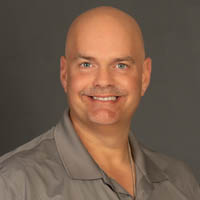
“Trust the Process.” This is a common phrase used in The Healing Place’s long-term residential program. Most people I talk with believe that our clients come to our program to stop using drugs. What separates our behavior modification program from others, is that our clients learn the tools to live life without drugs. The decision of abstinence must be made daily. A complete lifestyle change must follow with a discipline that requires commitment daily in one’s life.
We teach the 12-step spiritually based recovery method and believe in its success. The steps focus on self-change through a God of one’s understanding. Our peer driven model focuses on mentorship, fellowship, accountability, and love. We believe the therapeutic value of one alcoholic helping another is beyond parallel to any form of recovery or treatment. Each class is taught by peer mentors who have recently completed the program. The goal is to share experience, strength, and hope with clients. This is the first phase of putting a client in the best possible position of long-term recovery.
Our clients begin the first two months of our program in the motivational track. During that time, our clients work steps 1-3. The idea is that one must show motivation through actions by attending classes and meetings. The lifestyle change begins with the admission of powerlessness, the belief that one can change through a higher power, and a decision to turn one’s will over to that higher power. Each client determines their God of their own understanding. A change does not come easily so repetition is very important. Steps 1-3 are the foundation towards our clients recognizing anger, fear, and guilt from their addiction.
Our clients then move on to the Phase portion of our program, which typically lasts four to six months. During this time, clients individually work steps 4-12. In order to change, one must inventory self before a change can be applied. Steps 4 and 5 provide that opportunity. They allow for our client to list resentments, fear, and harms in their past. This process will give the client a fundamental knowledge of self. The goal is to acknowledge and accept one’s patterns in behavior. will apply this knowledge in steps 6 and 7 by working them daily. Steps 6 and 7 focus on one’s character defects and shortcomings. I call these steps the balance steps. For example: impatience is a character defect and patience is a shortcoming. The goal is to lower impatience and increase patience through both action and prayer. Clients then focus on the amends process in steps 8 and 9. This will allow them to address the guilt caused from harms in the past. We teach that amends is not just an apology, but an action of righting a wrong.
Clients then focus on steps 10-12. These are maintenance steps. They should be performed daily for the rest of our client’s life. This process is a continuation of self-inventory, prayer, and meditation. The final step focuses on giving back what was so freely given. This is where our peer mentors really begin to receive the benefits of the recovery process. The transition phase also begins during this time. Our clients are given tools towards learning about jobs, education, and housing.
So how is all this knowledge of self applied in the program to better prepare for life on life’s terms? Our community process is just the tool to enhance a client’s growth. Our modified therapeutic community gives our clients the opportunity to hold each other accountable by addressing negative or maladaptive behaviors in each other. I compare the steps to going on a diet. The reduction of calories is the main emphasis of a diet. The community is adding the gym and an exercise routine to enhance the diet. Our clients learn how to lovingly confront behaviors in each other. This aids in their change process. Supervisors in positions are nominated each week and clients are put in positions of growth. This is the social model at its purest form. Each client has an opportunity to deal with resentments, fear, and guilt in a safe and loving environment through writings and actions.
We feel this better prepares each client for life in long-term recovery after leaving The Healing Place. The repetition, discipline, and accountability taught in the program gives hope to those who feel there is none. A goal without action is just a dream! The Healing Place separates itself by giving our clients an opportunity to recover and pursue their dreams.

The Healing Place saved my life . It returned a father ,son,brother,uncle ,and a productive member of society who has dedicated the rest of his days to helping others .
William Bennett